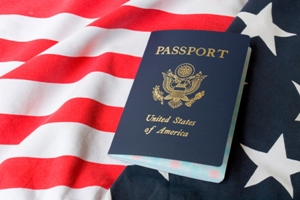“Dual Intent” Work Visa for Foreign Professionals in Special Occupations
The H-1B is the most common work visa used for professionals that just graduated from a U.S. university and wish to stay and work in the United States or for professionals with a University degree that wish to work in the United States. One of the big advantages of the H1B visa is that for immigration purposes it is considered a dual intent work visa. This means that even if the visa is classified as a non-immigrant visa and the worker is supposed to work and stay in the U.S. temporarily, at the same time this visa has the dual option to allow the holder to apply for an immigrant visa to become a Legal Permanent Resident, while still working with this visa.
The H-1B visa is not the only work visa allowing this dual intent; also the L-1 visa for corporate transferees and the O-1 visa for workers with extraordinary ability are considered dual intent visas, among other visa types.
The H-1B visa covers two types of temporary employment, those in specialty occupations that require a college or advanced degree at minimum entry-level; and artists, entertainers, athletes, and fashion models of distinguished merit and ability, along with people assisting in their performance.
H-1B visa for specialty occupation workers
The H-1B work visa is designed for employees who are coming to the U.S. to perform services in a prearranged professional job on a specialty occupation. In terms of the application process, the U.S. employer is required to file a labor condition application (LCA) with the United States Department of Labor (DOL), concerning the terms and conditions of the contract of employment. To qualify for this visa, the prospective worker requires a bachelor’s or higher degree (or equivalent) in the specific specialty for which employment authorization is being requested.

What is a Specialty Occupation?
The USCIS (U.S. Citizenship and Immigration Services) is the official government department in charge of determining whether the employment constitutes a specialty occupation and whether the alien is qualified to perform the services under the H-1B visa category. According to the USCIS, a specialty occupation is an occupation that requires the theoretical and practical application of a body of knowledge in a professional field, and at least the attainment of a bachelor’s degree, or its equivalent, as a minimum for entry into the occupation in the U.S. Some examples of Specialty occupations are IT, Computing, Finance, Accounting, Banking, Marketing, Advertising, PR, Sales, Recruiting, Engineering, Teaching, Healthcare, Medical, Legal, Lawyers, Networking, Telecoms, Business, Management, and Hospitality.
H-1B2 and H-1B3
There is a similar visa called the H-1B2 visa that is designed for workers performing services of exceptional merit and ability relating to a Department of Defense (DOD) Cooperative Research and Development Projects. H-1B2 application does not require filing a labor condition application. In addition, there is an H-1B3 visa specially designed for Fashion Models, and in this case, the labor condition application is required. To be eligible for this visa category the applicant must be a fashion model of distinguished merit and ability.

L-1 Visas
The L-1 Intercompany Transferee Work Visa allows you to transfer from an office out of the United States to an office of the same company in the USA. The L-1 visa is a non-immigrant visa that allows a person to live and work in the US generally for three years with possible extensions.
The L-1 is a special type of visa for current foreign employees of an international company that has offices in a country abroad and also offices in the United States, who are currently working on a branch of the company outside of the U.S. and wish to relocate and transfer to work at a branch of the same company located in the United States. The U.S. office must be a branch, parent, affiliate, or subsidiary company to the foreign company. To be eligible for the L visa the intracompany transferee’s employees must have been employed abroad continuously during at least one year within the three preceding years prior to being granted the L-1 status and will be employed by the same company in the U.S. The employment should be in a managerial, executive, or specialized knowledge position. There is currently no annual cap on L-1 visas. There are two types of L-1 visas, L1A and L1B. The L1A allows you to stay in the US for up to 7 years and the L1B for up to 5 years.
There are other types of work visas available, like the R-1 for religious workers, the H-2 visa for temporary workers, and other visas, but the H-1 and the L-1 are some of the most common work visas for professionals.







